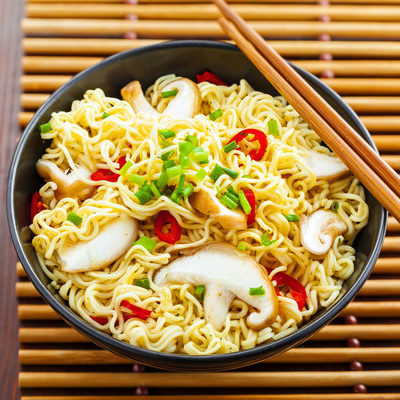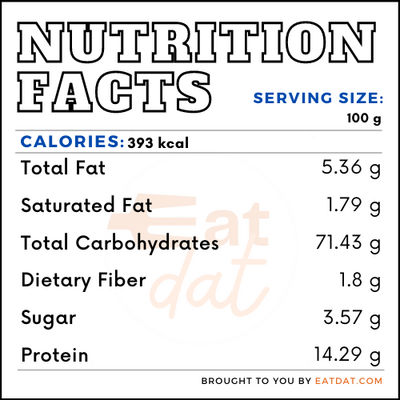
Yellow Noodles
What is Yellow Noodles?
Yellow noodles, also known as alkaline noodles, are a type of noodle that have a high alkaline content. Yellow alkaline noodles (YAN) are made of wheat flour, water, salt, and alkaline salt (sodium and potassium carbonate). Alkaline salt imparts the yellow color, texture, flavor, and high pH to these noodles. Egg is also sometimes added to these noodles. These noodles contain a lot of moisture, which limits their shelf life to a couple of days.
- Some types of processed yellown alkaline noodles may last up to 4 days.
- These noodles can be fresh, chilled, par-boiled, or instant.
Different types of yellow alkaline noodles include:
- Hokkien noodles
- Ramen
- Mie basah
- You mian
- Lo mian
- Yi mian
Origin of yellow noodles
Legend has it that the first alkaline noodles were created with water from the lake Kan in Inner Mongolia. The water in this lake had miraculous properties and was highly alkaline. These noodles then spread to China, Japan, Indonesia, and other countries in Southeast Asia. With more trade, colonization, and Westbound immigration, yellow alkaline noodles were transported all over the world.
Commercial production
These noodles are often manufactured in small cottage industries due to their short shelf life. These are prepared in the same manner as normal noodles at first, mixing and resting the dough. After these phases, the noodles are soaked in lye water before sheeting and slitting the dough to the required size. Some producers conduct the soaking phase after the slitting phase. The noodles are then parboiled, cooled, and oiled before being packaged.
Nutrition
A 100g serving of yellow noodles contain:

Yellow alkaline noodles contain wheat, which is a good source of carbohydrates, fiber, manganese, selenium, copper, and phosphorus. Protein, usually in the form of eggs, is also added to the noodles. The alkaline solution regulates the production of acidity in the noodles, and the pH level must be above 7. An alkaline diet can lead to improved kidney health, prevention of cancer and heart diseases, and increased growth hormones.
Yellow noodle recipes
These noodles can be used in a variety of dishes. They can be adapted in several ways to make normal noodle dishes, as well. Here are a few interesting recipes:
- Chinese Cold Noodles
- Chicken Lo Mian
- Scallion Oil Noodles
- Wuhan Hot Dry Noodles
- Cantonese Wonton Noodle Soup
- Tahini Noodle Bowl
- Xiao Mian
FDA regulations
The FDA classifies noodles and noodle products as products made from semolina, durum flour, farina, or flour along with eggs. These products are strictly regulated in the US for their seasonings, salt, gluten content, glyceryl monostearate, etc. The finished product is required to be at least 87% solid. The labeling of these products must clearly address the FDA’s specifications. Sodium carbonate, used in these noodles for the alkalization, is classified as a boiler water additive by the FDA. Therefore, the production of these specific noodles is also strictly regulated.
References
Karim, Roselina & Sultan, Muhammad. (2015). Yellow Alkaline Noodles: An Introduction. 10.1007/978-3-319-12865-8_3.
https://www.researchgate.net/publication/312775818_Yellow_Alkaline_Noodles_An_Introduction
Karim R., Sultan M. (2015) Yellow Alkaline Noodles: An Introduction. In: Yellow Alkaline Noodles. SpringerBriefs in Food, Health, and Nutrition. Springer, Cham
https://link.springer.com/chapter/10.1007/978-3-319-12865-8_3
Diane Miskelly, Chapter 24 – Optimisation of End-Product Quality for the Consumer, Editor(s): Colin Wrigley, Ian Batey, Diane Miskelly, In Woodhead Publishing Series in Food Science, Technology and Nutrition, Cereal Grains (Second Edition), Woodhead Publishing, 2017, Pages 653-688, ISBN 9780081007198, https://doi.org/10.1016/B978-0-08-100719-8.00024-3. http://www.sciencedirect.com/science/article/pii/B9780081007198000243
